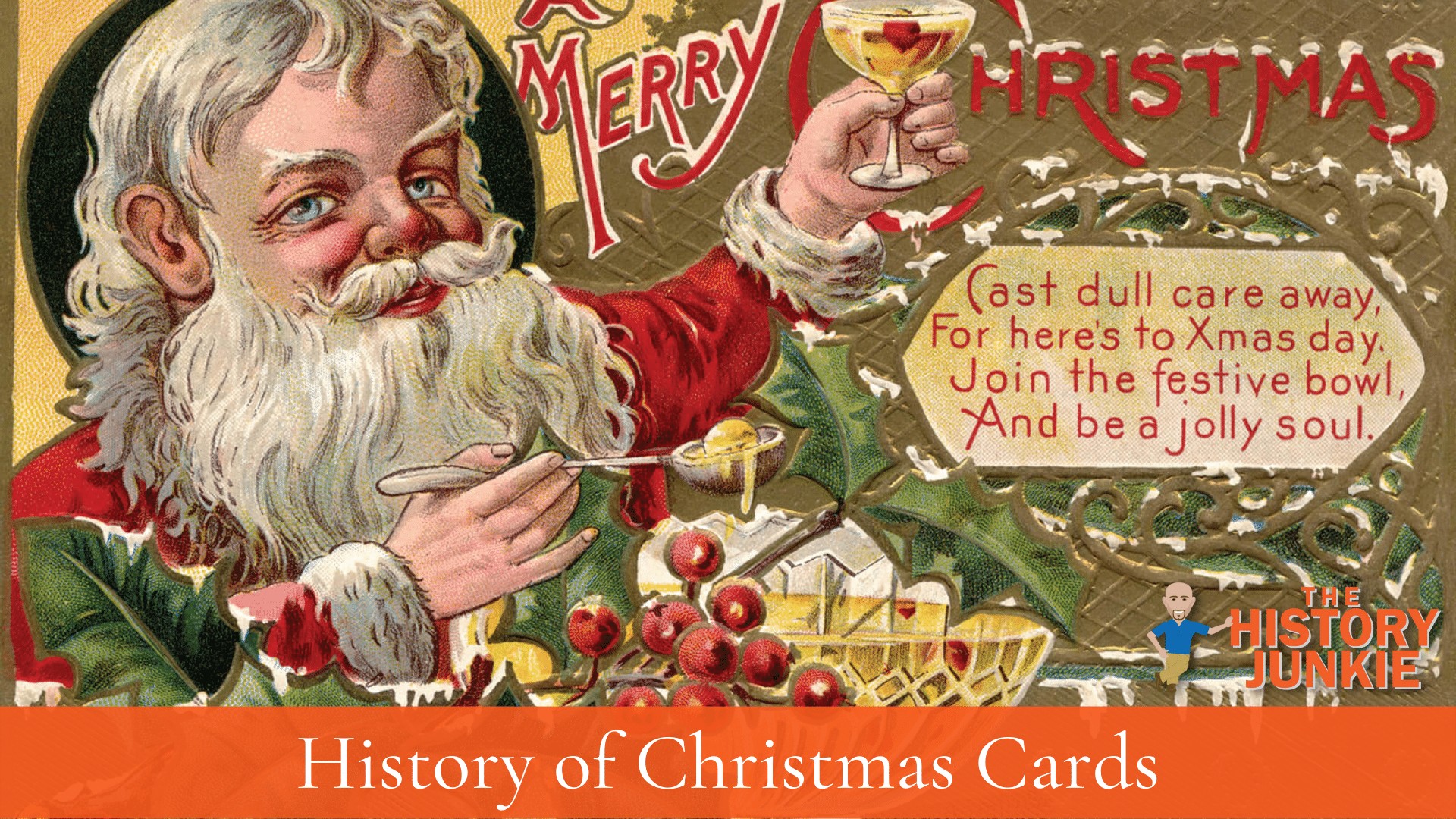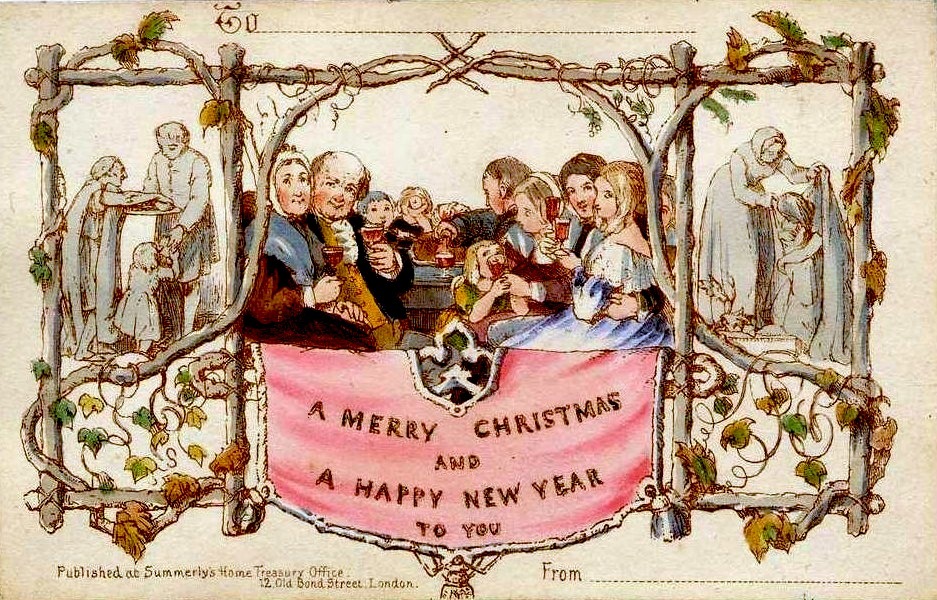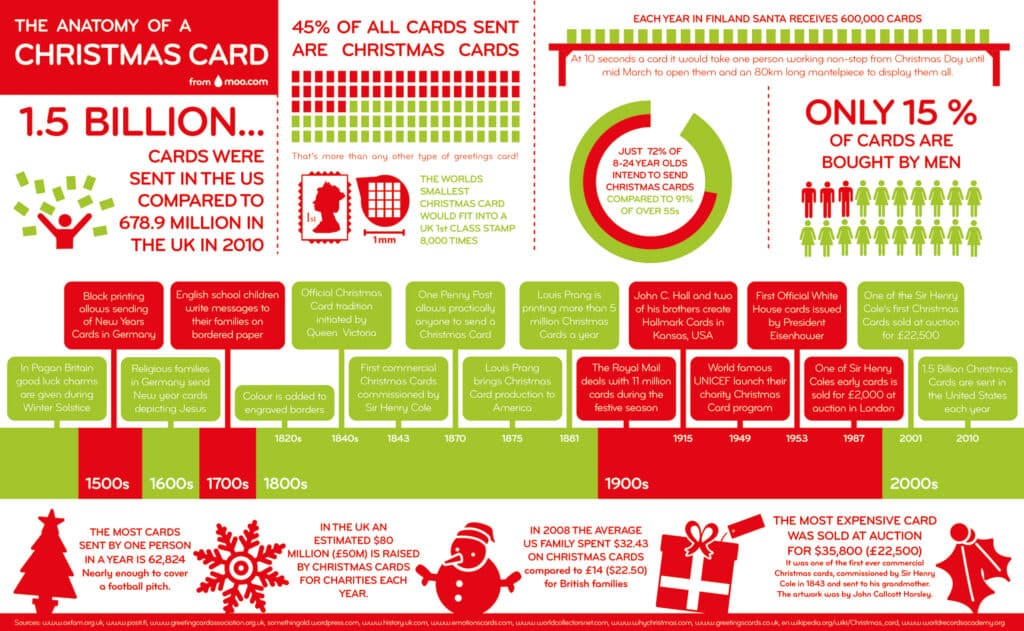The Christmas Card has become synonymous with Christmas and seems to have been around forever.

Every family seems to have their own tradition when it comes to these holiday cards. Some like to write to their family and let them know how they have faired this past year (this has decreased in the age of Social Media), some enjoy receiving them and decorating their counter or, like my parents, a door frame with them, and some give them to family members as Christmas presents with money inside.
Regardless of the reason, a good card is always nice to get. It does not have to have any sort of monetary gain inside for it to be a nice gesture.
Have you ever wondered when this tradition started and when the first Christmas Cards were handed out?
It seems like a more modern tradition, and I doubt it stems back to the first Christmas. It is kind of hard to imagine the three wise men sending Jesus a Christmas Card every year with a couple of bucks in it!
So when did it start?
Well, Christmas Cards, like many other traditions i.e. Christmas Bells, Christmas Trees, Christmas Cake, etc, have their own unique history and how they evolved into what they became today.
History of Christmas Cards
The Christmas Card was first realized by a nobleman in England named Sir Henry Cole, who lived over 175 years ago. He had worked very hard to get the cost of postage lowered to a penny (hard to believe with today's prices). Lowering the cost would help encourage citizens to use the postal system.
The problem that he quickly realized was that he needed to create more volume to help compensate for the loss of revenue. If the volume stayed the same, then it would be difficult to justify the lowered price.
His timing was perfect.
Victorian society had just begun to get into Christmas, and businesses saw the opportunity to market to this relatively new but profitable Christmas season (The holiday had been around for a while, but the Christmas season lasted most of December).
Christmas traditions that we still have today emerged during the Victorian era, and one of those traditions was writing a long, personal letter to friends to wish them a Merry Christmas. Sir Henry Cole saw an opportunity.
He sought to solve the problem of creating volume by creating a Christmas card that could replace the long-form Christmas Card that was sent to family members.
As I said, his timing was perfect because another event occurred that created even more buzz around Christmas, and that was the release of "A Christmas Carol" written by Charles Dickens. This became a very popular book and created more excitement around the holiday season.
Sit Cole then commissioned the design of a Christmas Card from Mr. John Calcott Horsley and began selling them at a shilling a piece. It is estimated that this increased the mail volume by 11.5 million pieced in 1846.
Here is what the first Christmas Card looked like:

After its initial success, it was clear that they would try again the next year.
Here is what the second Christmas Card looked like:

Printers saw the value in these cards but thought they would probably fall out of style. However, they kept staying relevant and even growing in popularity as more and more people made a tradition out of them.
The artwork on these cards continued to improve, and by 1860, Christmas Cards were definitely here to stay.
Christmas cards moved across the Ocean and into the United States by the late 1840s, but the cost was too much for most families.
However, Louis Prang saw an opportunity in the business, so he began to mass produce the cards, which led to the cost dropping and more people being able to buy them. These first cards in the United States were a success, and others started to take notice.
The most well-known of these was John C. Hall and two of his brothers, who created the first Hallmark cards. Through time, Hallmark obviously expanded to more than just cards, but this is where they began.

